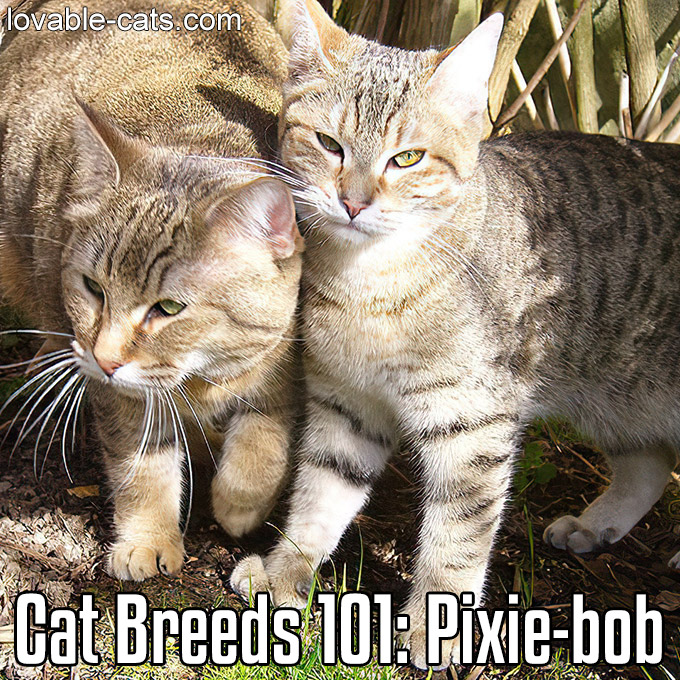
Cat Breeds 101: Pixie-bob – Image To Repin / Share
Photo: Wikipedia – lic. under CC 3.0
For first time cat owners, the Pixie-bob breed could be one of the ideal choices! Discovered by Carol Anne Brewer, the breed originated from the Northwestern region of the United States. There are claims that this breed came as a result of the mating of a barn cat and an American bobcat. [1] In 1994, the Pixie-bob breed was registered by TICA.
Some Pixie-bobs are long-haired, while others are short-haired. A prominent chin, paired by hooded eyes, give the Pixie-bob its wild appearance. Also, this medium-to-large breed of cat has long and heavy legs, of which the hind legs are notably longer than those in front. One of the unique characteristics of this breed is its polydactyly. Meaning, they may have more toes than others. [2] They may actually have six to seven toes on each of their feet. According to research, Pixie-bobs can live for up to 13 years, or even more.
Pixie-bobs are often called dog-like, due to their loyal devotion to their owners and families. They are capable of embracing the personalities of other animals and live well with children at home. In fact, they are more tolerant with children compared to other breeds of cats.
Some owners would consider this breed as an intelligent one. In fact, they can be taught tricks. They also love to take a walk with their owners. Furthermore, they can be playful but not destructive, unlike other breeds of cats.
Pixie-bobs love to mingle with their family. At times, they could do well being a left alone for a period of time. But when they are with their family, they can be demanding of their owner’s attention. [3] The breed is also described as talkative. It communicates with its owners through constant chirping, growling and chattering, all day long. [4] Most of them don’t meow very often, while there are some which don’t meow at all.
This breed is also claimed to be affectionate, and companionable. Research also reveals that they want to become an important part of the family, as shown by their willingness to get involved in any family activity, such as parties and gatherings. They are considered as highly sociable cats, not just to their owners, but to strangers as well. Most of they time, they want to be in the same room as their owners, so you can expect them to follow you around the house. [5]
References:
[1] https://www.vetstreet.com/cats/pixiebob
[2] https://www.tica.org/public/breeds/pb/intro.php
[3] https://www.catster.com/cat-breeds/Pixie_Bob
[4] https://www.vetstreet.com/cats/pixiebob
[5] https://en.wikipedia.org/wiki/Pixie-bob
